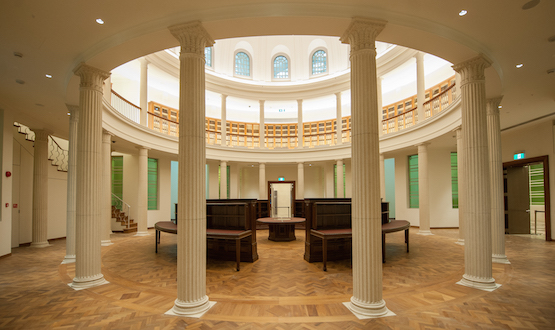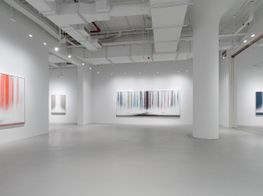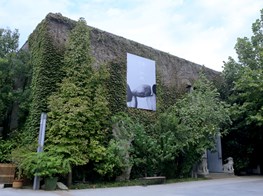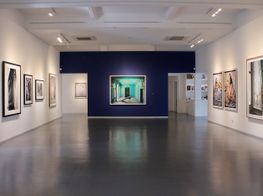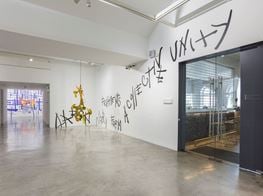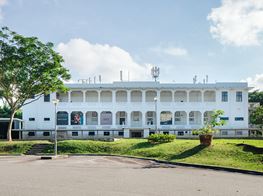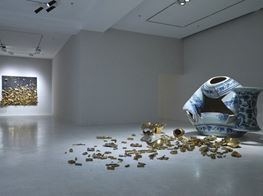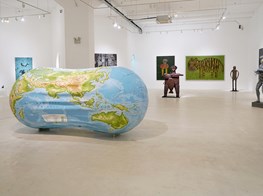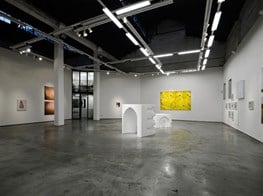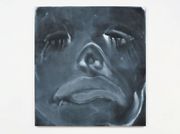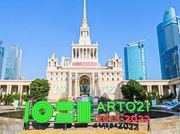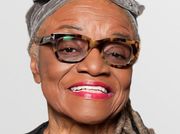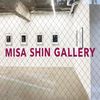Dr Eugene Tan
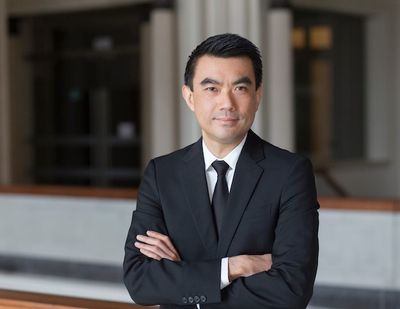
The much-anticipated National Gallery Singapore opened its doors to the public for the first time on 24 November 2015. Following an extensive renovation by Studio Milou Architecture, the museum now occupies two important historic buildings in the heart of Singapore’s Civic District, the former City Hall and Supreme Court buildings. The 64,000 square metre museum is the largest visual arts institution in Singapore.
Home to Singapore’s national collection, the museum is the first ever dedicated to Singaporean and Southeast Asian modern art. It focuses on relating them to wider Asian and international contexts, and curating a cultural dialogue between Singapore and the rest of the world.
We spoke to Dr Eugene Tan, the Director of the National Gallery Singapore, as he prepared to put the finishing touches to the museum and inaugural displays in the lead-up to its opening. A prominent Singaporean curator, he has been instrumental in the development of Singapore as a leading cultural hub in the region.
Prior to joining the National Gallery, Tan served as the Programme Director (Special Projects) at the Singapore Economic Development Board (EDB) and oversaw the development of Gillman Barracks, a visual arts hub in Singapore. He has also held various positions in the arts, including Director of Exhibitions for Osage Gallery, Director of Contemporary Art at the Sotheby’s Institute of Art – Singapore, as well as Director of the Institute of Contemporary Arts Singapore.
His extensive curatorial experience includes the Singapore Pavilion at the 51st Venice Biennale (2005), and the inaugural Singapore Biennale (2006), as well as numerous thematic exhibitions held in leading international institutions. Tan is co-author of the publication Contemporary Art in Singapore
(2007), and has contributed to numerous exhibition catalogues and publications by NUS Press, Hatje Cantz and Phaidon, as well as art journals such as Art Asia Pacific, Art Review, Broadsheet, C-Arts, Contemporary, Flash Art, Metropolis M, Modern Painters and Yishu: Journal of Contemporary Chinese Art.
To what extent do you feel the objective of establishing Singapore as a global arts city has been achieved?
It is important to understand the reasons for Singapore’s drive to develop the arts, and as such, what is significant is the Singapore government’s acknowledgement of the importance of art, and the bigger role that it should play in Singapore’s society.
The art landscape in Singapore has certainly changed substantially since 2000, when the Renaissance City Plan was published. This followed from an earlier plan put in place in 1989 by the Report of the Advisory Council on Culture and the Arts, which was really the impetus to set up many of the institutions and museums we have today: the National Arts Council, the Singapore Art Museum and the Asian Civilisations Museum. This, and the subsequent Renaissance City Plan, helped capitalise other parts of the ecosystem such as the non-profit spaces, university museums and galleries, the art fairs, and commercial galleries. It also led to the internationalisation of the Singapore art scene, which led to Singapore’s participation at the Venice Biennale in 2001 and then the Singapore Biennale in 2006. The establishment of National Gallery Singapore was also a result of this plan.
While this planning has resulted in greater international platforms and higher profiles for Singapore and Southeast Asian artists, as well as increased destination tourism through art events and exhibitions, the real achievement has been furthering the conditions for the production and reception of art through the development of the ecosystem for art, so to speak. We can see this happening and National Gallery Singapore is coming at the right time as part of this development.
Facade of former Supreme Court. Image courtesy Darren Soh and National Gallery Singapore.
What is the founding ethos of National Gallery Singapore and what will make it a unique visitor experience?
The vision and mission of the National Gallery Singapore is to be a leading arts institution that inspires and engages our people and our neighbours, creating dialogue between the art of Singapore, Southeast Asia and the rest of the world. The focus of our museum will be the art of Singapore and Southeast Asia, which we will present through our two permanent galleries. Through these galleries, we will present and (re)write the histories of art in Singapore and Southeast Asia. It will be the first time that the public will be able to experience the development of modern art in Southeast Asia from the 19th century to present day, through two comprehensive and long-term exhibitions drawn from the largest public collection of modern Southeast Asian art. This will be extended through our special exhibitions, which will explore the links between the art of Southeast Asia and other parts of the world, and re-evaluate the development of art in the region within broader contexts.
We will also have one of the largest art education centres of its kind, where the objective is to grow the appreciation of art among the young.
Former Supreme Court, Rotunda Dome. Image courtesy National Gallery Singapore.
And how is the museum positioned in relation to the existing Singapore Art Museum?
The focus of National Gallery Singapore is the art histories of Singapore and Southeast Asia. Through our research, education and exhibitions we examine the historical development of modern art in Southeast Asia within a global context, focusing on the art of the 19th and 20th century. On the other hand, the focus of the Singapore Art Museum is contemporary art.
Tell us about the history of the collection and your vision for its continued development?
The Gallery will draw from over 8,000 artworks in the national collection of Singapore and Southeast Asian artworks. It was a collection that started in the 1970s, and through an active acquisition policy of purchases and donations, the national collection has grown to be one of the largest public collections of Southeast Asian art. Apart from collecting works that are reflective of the breadth and depth of art histories in Singapore, we are also collecting works that provide a framework of significant art historical developments and major art practices in the region.
The strength of the national collection lies in its comprehensive representation of Singaporean art, with its unparalleled holdings of works by major Singaporean artists such as Georgette Chen, Chen Chong Swee, Chen Wen Hsi, Cheong Soo Pieng and Liu Kang. The collection now has a broad span from late 19th century paintings to contemporary video installations.
We also have a large collection of modern and contemporary Southeast Asian artworks with significant pieces from Southeast Asian artists of international standing, such as Affandi (Indonesia), Latiff Mohidin (Malaysia), Le Pho (Vietnam), Montien Boonma (Thailand) and Fernando Cueto Amorsolo (Philippines). Works from this collection has also travelled to international museums and exhibition venues in the Americas, Europe and Asia.
The aim for the collection is for it to be representative of the development of art in Southeast Asia, and beyond that to also document the links and connections between the region and other parts of the world.
Atrium, National Gallery Singapore. Image courtesy National Gallery Singapore.
How did your curatorial colleagues approach that task? And what can you tell us about the opening exhibitions?
The curators have been working hard to research and uncover new aspects of the art history of the region, which will be reflected in our two permanent exhibitions. They have worked hard to establish relationships and build trust with art collectors and art institutions around the world on loans of key artworks to complement our collection.
The DBS Singapore Gallery, one of our two permanent galleries, aims to provide an understanding and appreciation of Singapore art; its development since the 19th Century; and links with Southeast Asia, Asia and the world. Our other permanent gallery, the UOB Southeast Asia Gallery, will provide a regional perspective of the historical development of art in Southeast Asia from the 19th century to the present. Its aim is to provide a sense of the richness and diversity of the art in Southeast Asia through shared historical experiences, highlighting the key impulses to art making across the region.
Are there any particular aspects of the museum’s architectural design that are a personal favorite for you?
The architect, Jean Francois Milou has transformed two historically important buildings – the former City Hall and Supreme Court, in a sensitive and elegant, yet understated way. Inside, the architects have reimagined the circulation of the space; link bridges connect the two existing buildings with white tree-like pillars supporting the two buildings. The design will transform the way visitors move through the galleries, introducing contemporary structures without detracting from the fabric of the original architecture. The rooftop of the former Supreme Court building will also now be accessible, revealing a view across the original rotunda domes. On the exterior a new canopy, comprised of over 15,000 golden aluminum panels, covers the two neoclassical structures and provides new sunlit public spaces.
How has the local community received the design?
Earlier this year, we organised the Naked Museum Building History Tours for the public to have their first glimpse of the new building, bared of its artworks. The response was overwhelmingly positive. We hope that National Gallery Singapore will become a space for all, with lots of interesting spaces to explore, both inside and outside the galleries. It should be a place for the community to come, and learn about and enjoy art.
Rotunda Library 2, National Gallery Singapore. Image courtesy National Gallery Singapore.
Can you tell us about these collaborations and the role you see this cultural dialogue playing in the success of the museum?
Another important mission of National Gallery Singapore is to examine the links and connections between the art of Southeast Asia and other parts of the world. This will be done through our special exhibitions, which will include collaboration and be co-curated with other art institutions around the world.
For our first special exhibition in early 2016, we will co-curate an exhibition with the Centre Pompidou that re-examines and reframes how we understand modernism from the perspective of Southeast Asia. The exhibition will draw from the collections of both institutions and will take Southeast Asia as a point of departure, looking at how artists in the region engaged with modernism and the role of art within societies undergoing change and modernisation. The works included in the show will be related to works by artists situated within the Euro-American Modernist paradigm. The exhibition will reveal how shared issues in modernism were approached by artists working in different contexts, through common approaches to modernism, ways of working and conceptual orientations.
It is through this and other special exhibitions that we hope to further the understanding of art from Southeast Asia internationally, and its connections to the art of other regions.
Please discuss some of the initiatives you are taking with respect to education and engagement?
Education forms part of our core ethos of the museum. We will engage visitors and enable them to learn about Singapore’s history and culture, as well as the histories of Singapore’s neighbouring cultures. Our programs include tours, talks, artist conversations, workshops and screenings.
We are placing great emphasis on the role of education and research as part of the museum’s mission and vision; indeed the museum will open with the Keppel Centre for Art Education, which will be the first dedicated art education facility in the region, designed with four purpose-built art environments to provide a unique art experience for younger audiences through our engaging art programming. Young visitors will be invited to create artworks that they will be able to see on the walls of the museum. They will also have the chance to learn about what curators do, among other specially tailored activities including facilitated workshops.
What is your greatest hope for the National Gallery Singapore?
National Gallery Singapore occupies an important position within the arts landscape and ecosystem, not only in Singapore but also, I hope, in Southeast Asia. In addition to furthering the understanding and raising the international profile of art and artists from Singapore and South East Asia, I hope that National Gallery Singapore will be a catalyst, contributing to the development of art in the region by advancing the conditions for the production and reception of art, and ultimately making art occupy a more significant place in society in Southeast Asia. —[O]





